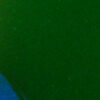You might remember the human farm of The Matrix as a nightmare of perpetual amniotic suspension. That is how I remembered it. All the people, from babies to adults, umbilically connected to the great machine that feeds on them, look like nothing so much as fetuses that failed either to be born or die. After I nursed my children, the milkiness of this fantasy struck me anew. They are being milked, the Matrix humans. They are hooked up to a great vacuum machine that suckles them so that others can feed.
Feeding other beings with your body may be a dystopian nightmare, but it is also a thing that women and other female mammals do every day. During college I worked on a small dairy farm in France – a summer job that didn’t pay but that gave me an attic to live in and a chance to learn French (to this day, my vocabulary skews toward the agricultural). We milked the cows once in the morning and once at night. They were compliant, even eager for the relief that milking would bring them. More often than not, they would all be waiting at the door of the barn at milking time. If we were late, their udders would be hard with engorgement. I do mean hard, like the smooth wooden knob of a banister. They would come in anxiously, sniffing their way to their own stalls as surely as if they could read the nametags lettered by hand over their mangers: Étoile, Framboise, Luna, Pepsi, Tilleul, Sureau. I would hitch their bridles to a steel bar and spread the grain on the floor in the front of each one. Multipasse, the gray tabby, threaded among their feet scouting for spilt milk. The chickens wandered by and idly pecked the grain. Sun slanted in from the east door to the vegetable garden, or from the west door to the field, depending on the time of day.
To milk them, we used vacuum pumps attached to a central air compressor. From the compressor, vacuum tubes ran down from the rafters of the barn to each of the eighteen milking machines. Each machine consisted of four steel cylinders lined in rubber that would compress and expand around the cow’s four teats with the suckling of the central vacuum. Before connecting the machine, I hand-milked, squirting a fine jet into my palm from each teat to check for the small grains in the milk that could indicate tuberculosis. Then I held one flange after another carefully under the udder until, with a sound like a household vacuum fastening onto a sock, the flange sucked the teat in. Hanging from the cows’ udders, the machines resembled candelabra.
Milk collected in another set of tubes and poured into a ten-gallon steel pail. This we would carry to a clean room adjacent to the barn. A two-hundred-gallon steel cooling vat took up most of the room, its gyre swirling the milk in silken folds past some hidden refrigeration element – whatever moved and cooled the milk, you couldn’t see. Gallons upon gallons, from eighteen cows, hot enough to steam when poured out of each aluminum bucket we brought from the barn, had to be cooled within minutes so that the milk could safely stay raw for cheese. Beyond that room was a series of rooms with cheeses in baskets, the tommes, or wheels, getting yellower, harder, smaller, older, with each successive stage. Sometimes we set a little milk aside to drink with our coffee. I scalded it in a saucepan to pasteurize it.
One can also harvest human milk by vacuum tube. The technical differences between a breast pump and a milking machine are not enormous. A breast pump looks something like the earliest cellular telephones, a heavy block of machinery carried in a nylon bag. My pump was butter yellow. It consisted of a machine for compressing air, vacuum tubes leading to flanges that connect to the breasts (two cone- shaped flanges for humans, where there were four cylindrical ones for cows), and small bottles for collecting milk (a few ounces for humans, many gallons for cows). Tubes and cords and tethers seem to be everywhere: tubes for the vacuum suction, tubes for collecting milk, cords for electrical power. You have to remember not to stand up and disconnect the tubes, break the seal, spill the milk.
In the first weeks after my sons were born, when I came home from the hospital, my milk wasn’t coming in and they weren’t nursing well. One of the nurses taught me to hand-express milk into a spoon and feed it to the babies. My efforts yielded about enough matter to fill the corner of an eye. I was frantic about it, in ways that are not easy to reconstruct now. To increase milk production, I pumped while I ate, while I read, while I wrote. For nine months I pumped every two to four hours, around the clock. I labeled milk, I froze milk, I pumped at work and at home. I picked figs after dark with a flashlight because, after putting the boys to bed, I had to pump before I could do anything else. Every time they woke up in the middle of the night, I nursed them, then went to pump in the other room.
The milking technology for cows is in many ways superior to the one for humans. Their first advantage over us is that they walk on all fours. Thus the dangling of the teat, the direction of milk flow out of the teat, and the direction of gravity’s pull are all the same. Humans walk upright, and so milk flow and teat and gravity are at sixes and sevens. Milk tends to dribble out the sides; you must sit upright; the flanges cannot be held on by vacuum alone, but instead require a special bandeau to strap them to your chest. To pump as a cow would frankly have been more convenient: standing in your familiar stall, with gravity and the vacuum and the long teats deep in the flange all taking the milk in the same direction.
I would sit there at my desk, upright, writing, pumping, tethered to the tubes, with my peanut butter sandwich – my scatter of grain. What I wanted was for my sons to have the feeling of provision, of love, that babies have if they nurse from birth. Or that I imagine that they have – but I have seen these babies, and I think I see what they feel. For a short time I nursed both of my sons directly, one at a time, every time they woke in the night. I barely slept. I had to stop. Something slipped out of my grasp. Four years later, I have never removed the pump from the file drawer of my campus desk. Putting the milking machine on a cow, the verb you use in French is brancher, to connect.
Milk is prominent in metaphors of solace: the land of milk and honey; the milk of human kindness. The pelican is an icon of Christ because at some point people thought it pierced its own breast with its beak to feed its young with blood. Jesus, then, would be a lactating man. In the Pietà, Michelangelo’s sculpture of Mary holding her dead son, the artist renders Jesus’s body in a position as closely resembling that of a nursing infant as his full-grown adulthood will allow. Some Mary sculptures miraculously lactate.
But exploitation is milky in our fantasy lives too. Our use of cows is one such exploitation; we separate their calves from them and take their milk. One morning on the farm I woke to find that a calf had been born in the night. Trembling cannot describe him. Wet, abject, he vibrated in his tripod stance on the straw. One gasped to see life inflict itself upon him. He would stay with his mother for now. She was still producing colostrum, a scant secretion rich in antibodies, yellow as gold, that precedes milk in humans and cows. It is useless for making cheese, which is what we were doing, but useful for strengthening calves. It would be gone within a few days. Then we would trade him his mother for a pen alone and a bottle from our hands. She would go back in the vacuum milking queue. He would cry for her, and she for him. Husbandry requires this.
Our neighbors who raised beef cattle took the animals’ lives at the end, but not their mothers at the beginning. Because they did not steal milk, they did not need to build trust. Herders of beef cattle do not approach the powerful back feet twice a day, to branch a machine. All spring you see the new beef calves standing under their mothers, nursing at will. You see them as well as you can from the road or the fence, a hundred yards away. Milking, you meet the gaze of dairy cows from a breakfast table distance. Is it an accident they are lovelier to us? The Jersey, her eyes so hugely alien they become human. The Brûnes des Alpes I tended. The black-and-white Holstein, cow in the primers and books, cow on the pajamas, the puzzles, the toys; cow of cows; till the spotted black-and-white pattern simply means cow. Cow, my children said, pointing to a black-and-white dog.
Lactation affords possibilities for thinking about exploitation and mercy both. At one time fostering, or nursing a child someone else bore, was a common form of women’s labor, both free and, during the centuries of chattel slavery, enslaved. Infants a mother nurses freely also need to exploit her, in a different sense of the term exploit: not the theft of labor and milk, but the simple use of a person – innocent in the infant’s case – without regard for her as an other. Infants are not in a position to have regard for the other; to ask them to recognize the mother’s need would be to inflict psychic damage upon them. The psychoanalyst D. W. Winnicott thought that infants needed to discover, from the mother’s constant presence, that she could withstand their aggressive demands on her. He called the mother who could give the impression that she would survive – and thus be reliably available – a ‘good-enough mother.’ This impression created a necessary and productive ‘state of illusion’ in the baby, as Adam Phillips explains. Gradually, only as the infant could tolerate it, the mother would let her in on the news that the world was separate from the infant’s body; that it might distance itself, but that it would return. This news must not come too soon.
Winnicott wrote with compassion of mothers; they had to be only ‘good enough.’ And yet the mother’s task of tempering the wind to her shorn lamb – even well enough – is not so easy. Lactation really is difficult for the mother to survive, just as the baby fantasizes it might be. It is not that breastfeeding might kill the mother but that she might be so disturbed, so exhausted, by the obliviously selfish demands on her body as to lapse into regarding the baby as an ordinary other. She might let slide the mental labor of reminding herself that the baby cannot yet manage much separation; she might make reciprocal demands on him. She might be depressed, or hungry, or the survivor or present victim of violence; and then she might not be able to produce the illusion of permanence at all. As Phillips puts it, ‘If she insists upon being a real person, then the infant or young child has to invent a false self to deal with her.’ She is to hide that she is a real person! She is to do so just enough! Some number of lapses into personhood can be acceptable, but how many? How would one know? I imagine every caretaker does lapse. I imagine every caretaker does insist, from time to time, upon being a real person. I know I did, and do. I lapse. When I think about my failures, I feel the same dreadful wave of nausea I felt in third grade when I was responsible for another girl locking herself in her locker out of sadness. The abyss of myself as a harmful person opens up inside my heart.
Irritated, burping someone, I patted too hard. I refused to be bitten. When they began to bite me while nursing, I weaned them. Not intentionally. Yelping, flinching away, I snatched back the confidence I had formerly inspired. I still flinch, in other ways. Without tact, furiously even, I walk out of the room. ‘May my milk poison you!’ is, as historian of magic Stephen Wilson drily notes, ‘one of the worst curses in the modern Balkans.’
My sons visited a dairy farm with their father at the age of three, more than two years after they were weaned. ‘I saw a baby cow milking his mom,’ one of them told me. He explained that the baby cow can’t drink too much because he has to save some for later. But milk is not supposed to be this way. Lactation brochures in the OB-GYN’s office explain that the more the baby nurses, the more milk the mother will produce. That’s if the baby will latch, if you make yourself available, if you succeed. The baby whose mother does not succeed in giving him a sense of provision will ration himself, Winnicott thinks; he will learn too early to taper his desires to the capacities of others. He will save some for later. My son described milking this way.
In the earliest days the pump seemed to speak with its every wheeze. It sounded like a human voice. Rape her is what it said. Of course it was not really speaking; it was, however, articulating, and those were the phonemes. I was sitting, at the time, on the nursery’s sky-blue rug decorated with clouds, looking at its awning-striped curtains in aqua and blue, at two in the morning. I was still on opioids from the hospital. Because of the unhealed incision in my stomach muscles, I could barely sit up straight enough to keep the milk from spilling out of the bottles and back over my body. The choice of words seemed neutral at the time. I would not have agreed that my hearing this command hissed over and over spoke to any feeling of violation on my part. What struck me as odd was the pronoun. Who was telling who to rape whom? No one else was in the room. Why not an address, you? Why not a confession?
Image © Sherry Thai

This is an essay from On Not Knowing by Emily Ogden, published by Peninsula Press.







